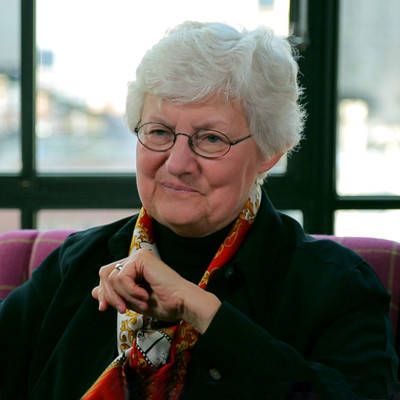Click here to subscribe today or Login.
WILKES-BARRE — If you take away anything from the Holocaust, consider the importance of the bystander and their ability to make a choice.
That was the message during the Holocaust Remembrance event held at the Jewish Community Center in Wilkes-Barre on Sunday, as the Jewish Community Alliance of Northeastern Pennsylvania prepared not just those of Jewish descent, but the community as a whole, for Yom Hashoah.
A black-and-white photo of a concentration camp with the word “remember” printed in white lettering was projected onto a screen at the front of the Weiss auditorium inside the JCC, as members of Temple Israel, Temple B’Nai B’Rith and Ohav Zedek stood at the podium beneath it, addressing the crowd about numerous stories, facts and statistics about the elimination of Jews within the Nazi-controlled regime during World War II.
The guest speaker for the evening was Stockton University’s Professor of Holocaust and Genocide Studies, Sister Carol Rittner, Ph.D. While Rittner has led several trips to Israel and written numerous books on World War II and the Holocaust, she herself offered the group a very different perspective on the horrific events that took place under the rule of Adolf Hitler and Nazi Germany: the perspective of the bystander.
Rittner, a Catholic and member of the Religious Sisters of Mercy, spoke about the topic of making choices during World War II, and that how if the majority who chose to remain silent during the merciless killings opted to speak up or show their disapproval that, perhaps, the events of that time may have gone differently. Through a series of maps and statistics, Rittner displayed435 million Jews living in Europe and 69 million living in Germany during the beginning of 1939, later flipping to a slide that showed how many remained by the summer of 1942. In total, roughly 6 million Jews were murdered from 1941 to 1945.
In fact, Rittner said the Holocaust was well on its way by the 1930s, as the Nazi revolution began targeting minority groups be it political, religious or otherwise. During that time, she said, many bystanders — who were neither of a minority group nor with the Nazi Regime — looked up to those of prominent power and affluence and based their decisions on what was right or wrong by their views. Out of the millions of people that lived within the Nazi controlled territory during that time, only less than 30,000 are known to be “Righteous,” or assisted the Jews. She then compared that time to present-day, where many a bystander are faced with similar choices on varying aspects in modern society presently.
“We know all too well that modern society is filled with examples of apathy. This is one reason that the behavior of bystanders during the Holocaust haunts us, and our awareness of what they’ve failed to do then, we are compelled to reflect on our responsibilities today.”
Another example Ritter gave on how to further prevent the exclusion or elimination of groups is to further become connected and find a common ground- be it through political parties, religious or other. It is when groups stand in solidarity together that the presence of evil and those who wish harm have a harder time succeeding int heir plans, she said.
Besides numerous speakers, the event also featured various prayers and remembrances.
One of the first to speak, JCC Executive Director Stuart Forman told audience members that Holocaust Remembrance Day is not just for the Jewish community, but to remember — and eliminate — all mass killings and genocides of a race, religion or group.
“Tonight we plead with humanity: never again,” he said. “Never again the Holocaust, but also, never again Rwanda, never again Cambodia, never again Croatia-Serbia. And never again anyone in humanity.”
As part of the event, Yom Hashoah chairperson David Schwager read the names of those past and present who lived through the Holocaust, with members of the Alliance lighting candles as their names were called. Schwager told the audience how important it is, now than ever before, to share the stories of those individuals and pass them down from generation-to-generation, as many are no longer with them today.
Rabbi David Kaplan, of Ohav Zedek, took to the podium to read the Kaddish. Asking audience members to read the listed names of the concentration camps within the prayer, Kaplan also wanted to remind the group that the prayer itself has little to do with the word death.
“It’s a very unique prayer, in terms that we insert the names of the death camps and places of tremendous untold Jewish suffering as part of this Kaddish,” he said. “We associate this prayer — the Kaddish — with death. But in fact, there isn’t one word in this prayer that has any connotation of the passing of death. Rather, it is a prayer to sanctify God, to elevate our souls to our creator.”
After the event, Kaplan said hearing Rittner’s speech was an eye-opening experience, and one that should not be forgotten.
“It’s a little surreal. Personally, it’s the first time I’ve ever heard someone who was a member of an organized religion other than Judaism accept responsibility for the Holocaust,” he said. “It was a little mind-bending to hear her as a sister, who lives her whole life to Catholicism, to accept that responsibility. I thought it was very powerful and profound.”





